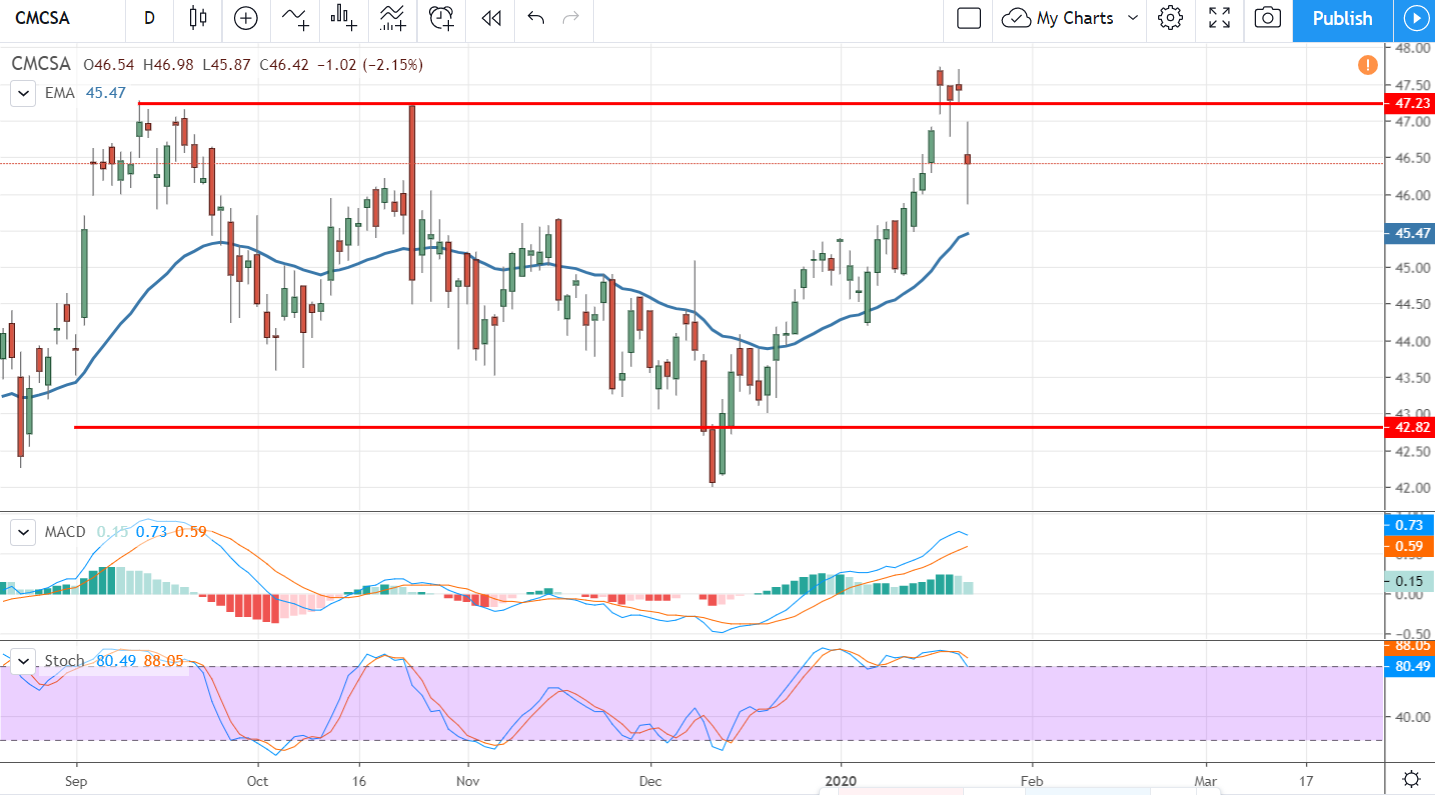Comcast's Earnings: The Good, The Bad, And The Ugly
Comcast (CMCSA) reported earnings this morning and sparked a bit of volatility in its share price. The stock price first shot up nearly 1.75% on strength in the top and bottom-line results. Shortly after the release and well before the open of today’s session Comcast shares gave up that strength and more.
The headline results were good but could have been better. Revenue of $28.8 billion grew by 2.0% and exceeded expectations. Revenue was driven by strength in high-speed internet offset by weakness in theatrical releases. The weakness in theatrical is not unexpected. It’s clear that Disney (DIS) is the winner at the box office in 2019, and its ugly to see, but theatrical sales are not the real risk to Comcast’s future growth.
Earnings Driven By Internet/Cable Subscriber Growth
GAAP EPS came in as-expected with adjusted EPS a bit hot relative to consensus. The strength in EPS was driven again by strength in broadband internet. The company added 466,000 new Internet subscribers versus the expected 362,000 and that translated into growth across most cable/broadband segments.
NBC/Universal did not fare so well. The media arm of the company fell short of expectations for revenue due to poor sales at the box office. Revenue for the Filmed Entertainment segment dropped 21% from the previous year due to two factors. The first is NBC/Universal’s success with its films in 2018 (the Grinch and Halloween are two), the second is Disney’s dominance of box office revenue this year.
Comcast’s Achilles Heel
While Comcast’s broadband and cable segments are doing well it’s not all wine and roses. The company saw its video subscriber losses accelerate to 149,000 and well above the consensus. The company’s CFO, Michael Cavanagh, warned investors on the conference call losses could accelerate further in 2020.
According to Cavanagh, consumer trends and rising prices are driving consumers away. Considering the vast amount of competition for streaming media, it is likely Comcast is losing subscribers to other services. The top competitor is Netflix(NFLX) but even it is under pressure from competition. Disney is emerging as a winner in the online/streaming space with the launch of Disney + last year and there’s always Hulu and HBO Max to consider.
Comcast Is Fighting Back
Comcast CEO Brian Roberts isn’t content to sit back and let his competition take his business. Comcast, through NBC/Universal, announced just last week its entry into the streaming wars. Peacock, a three-tiered streaming service, is scheduled to launch July 2020 and compete with the big boys. Notably, the company is planning to take back its content leased to other outlets so it has leverage within the market.
In a televised interview, Roberts said “We hope in the next four or five years to get to the kind of [average revenue per user] ... that some other platforms are getting today, … So I think we’ve given ourselves a long runway to scale up, take back some of the content that’s on other platforms, make some original content, engage with customers.”
Cash, Cash Flow, Dividends And Comcast Technical Outlook
Comcast is a cash-flow machine no matter what the 4th revenue and EPS comparisons say. The company reported net-cash from operations of $6.2 billion with $2.5 billion in free-cash-flow. Considering the company’s history of dividend increases, 12 years now, it is no surprise management increased the distribution today.
Comcast management increased the dividend to $0.92. That’s a 10% increase and brings the forward-looking payout ratio to 28.0%. With such a low payout ratio the company has plenty of cash to invest in the digital platform and pay the dividend. Also, future increases can be expected regardless of the amount of revenue or earnings growth. The only downside to Comcast distribution is the yield. At 2.0% it’s only a hair above the broad market average and far less than what you can get with other sectors.
Technically speaking, there is good news and bad news. The good news is that buyers are present above the short-term moving average. This shows confidence in the company’s growth outlook, about 5% revenue and 6% EPS in 2020, and its ability to compete with streaming. The bad news is that price action has fallen below a crucial resistance target at the previous all-time high. If price action cannot regain the upper side of the $47.25 level I would expect lower prices to come.
In the near-term, Comcast is likely to drift lower and test support at the short-term moving average. Support may kick in around $45.50, if that level doesn’t hold a move down to the $43.00 level is possible.

Before you make your next trade, you'll want to hear this.
MarketBeat keeps track of Wall Street's top-rated and best performing research analysts and the stocks they recommend to their clients on a daily basis.
Our team has identified the five stocks that top analysts are quietly whispering to their clients to buy now before the broader market catches on... and none of the big name stocks were on the list.
They believe these five stocks are the five best companies for investors to buy now...
See The Five Stocks Here
Which stocks are likely to thrive in today's challenging market? Enter your email address and we'll send you MarketBeat's list of ten stocks that will drive in any economic environment.
Get This Free Report
Like this article? Share it with a colleague.
Link copied to clipboard.